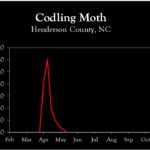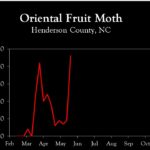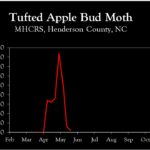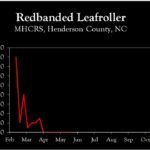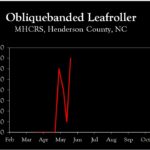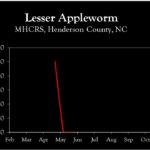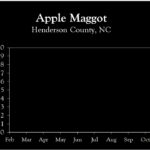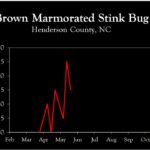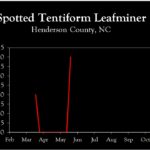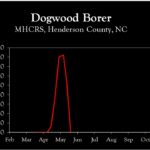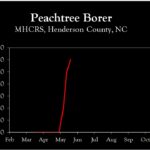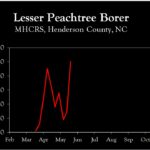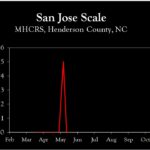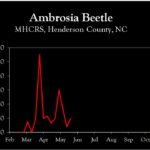WNC Orchard Insect Pest Populations – June 14, 2022
go.ncsu.edu/readext?870136
en Español / em Português
El inglés es el idioma de control de esta página. En la medida en que haya algún conflicto entre la traducción al inglés y la traducción, el inglés prevalece.
Al hacer clic en el enlace de traducción se activa un servicio de traducción gratuito para convertir la página al español. Al igual que con cualquier traducción por Internet, la conversión no es sensible al contexto y puede que no traduzca el texto en su significado original. NC State Extension no garantiza la exactitud del texto traducido. Por favor, tenga en cuenta que algunas aplicaciones y/o servicios pueden no funcionar como se espera cuando se traducen.
Português
Inglês é o idioma de controle desta página. Na medida que haja algum conflito entre o texto original em Inglês e a tradução, o Inglês prevalece.
Ao clicar no link de tradução, um serviço gratuito de tradução será ativado para converter a página para o Português. Como em qualquer tradução pela internet, a conversão não é sensivel ao contexto e pode não ocorrer a tradução para o significado orginal. O serviço de Extensão da Carolina do Norte (NC State Extension) não garante a exatidão do texto traduzido. Por favor, observe que algumas funções ou serviços podem não funcionar como esperado após a tradução.
English
English is the controlling language of this page. To the extent there is any conflict between the English text and the translation, English controls.
Clicking on the translation link activates a free translation service to convert the page to Spanish. As with any Internet translation, the conversion is not context-sensitive and may not translate the text to its original meaning. NC State Extension does not guarantee the accuracy of the translated text. Please note that some applications and/or services may not function as expected when translated.
Collapse ▲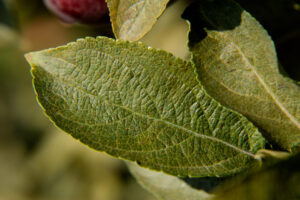 Lepidopteran Pests (codling moth, tufted apple bud moth, oriental fruit moth). With first generation codling moth flight nearing completion in Henderson County, and between generations in Cleveland County, codling moth should not be a concern throughout the region for several weeks. Also, if an insecticide recommended for tufted apple bud moth has not been applied since the beginning June, the window for obtaining season-long control will remain open for another week or so.
Lepidopteran Pests (codling moth, tufted apple bud moth, oriental fruit moth). With first generation codling moth flight nearing completion in Henderson County, and between generations in Cleveland County, codling moth should not be a concern throughout the region for several weeks. Also, if an insecticide recommended for tufted apple bud moth has not been applied since the beginning June, the window for obtaining season-long control will remain open for another week or so.
Second generation oriental fruit moth flight is underway throughout the region. Generally this generation is of little concern if good control was achieved against the first generation, which is the case based on the absence of damage in commercial orchards. However, OFM captures in pheromone traps have been somewhat higher than normal this season, so it is worth keeping an eye on this insect over the next few weeks. Unfortunately pheromone trap captures are not always a good measure of the threat of damage for this insect, but moth captures of more than 10 to 15 per week may warrant insecticidal control.
Secondary Pests (mites, aphids and leafhoppers). With a hot forecast, sampling for European red mite should be a priority at this time. While touring several commercial orchards last week, low populations of European red mite were observed in most locations. Under these hot conditions populations can increase quickly. A threshold of 5 to 10 mites per leaflet is recommended during June. Aphids and leafhoppers remain low, but populations should be increasing soon.
San Jose Scale (SJS). In addition to scale showing up on fruit in Polk and Cleveland County in the past two weeks, it has also appeared in several orchards in Henderson County in the last week. In those orchards with scale showing up, several insecticide options exist, including Assail (6-8 oz), Diazinon 50W (2-4 lbs/A), Centaur (34/5 oz/A), and Movento (6 to 9 oz/A). Senstar (18 fl oz/A) is a premix labeled for scale that includes the active ingredients in Esteem (pyriproxyfen) and Movento (spirotetramat). If orchards were previously treated with Esteem or Movento, Senstar is not recommended.
Learn more about southeastern apple insect pests at the Apple Insect Management page.
2022 Average Weekly Trap Captures
| HENDERSON COUNTY | |||
| Insects per trap | |||
| May 31 | Jun 6 | Jun 13 | |
| Codling moth | 0.5 | 0.0 | 0.0 |
| Oriental fruit moth | 3.5 | 4.5 | 23.0 |
| Tufted apple bud moth | 24.0 | 3.0 | 1.0 |
| Redbanded leafroller | 0.0 | 0.0 | 0.0 |
| Obliquebanded leafroller | 4.0 | 1.0 | 7.0 |
| Lesser appleworm | 0.0 | 0.0 | 0.0 |
| Apple maggot (abandoned and research orchards) | – | set | 0.0 |
| Brown marmorated stink bug (commercial) | – | – | – |
| Brown marmorated stink bug (unsprayed) | 0.5 | 2.5 | 1.5 |
| Spotted tentiform leafminer | 0.0 | 0.0 | 4.0 |
| Dogwood borer | 82.0 | 54.0 | 1.0 |
| Peachtree borer | 2.0 | 5.0 | 6.0 |
| Lesser peachtree borer | 9.0 | 14.0 | 50.0 |
| San Jose scale | 0.0 | 0.0 | 0.0 |
| Ambrosia beetle (all species) | 3.0 | 0.8 | 2.0 |
*Note that these averages illustrate only the timing of insect emergence and fluctuations in populations, and are not representative of population levels in any given orchard. The only way to have an accurate assessment of an individual orchard’s populations is to set up traps in that orchard.
2022 Accumulated Degree Days
| HENDERSON COUNTY | ||||
| May 31 | Jun 6 | Jun 13 | ||
| Codling moth (Biofix: April 22) | 555 | 666 | 800 | |
| Oriental fruit moth (Biofix: April 12) | 852 | 994 | 1162 | |
| Tufted apple bud moth (Biofix: April 27) | 655 | 796 | 964 | |



